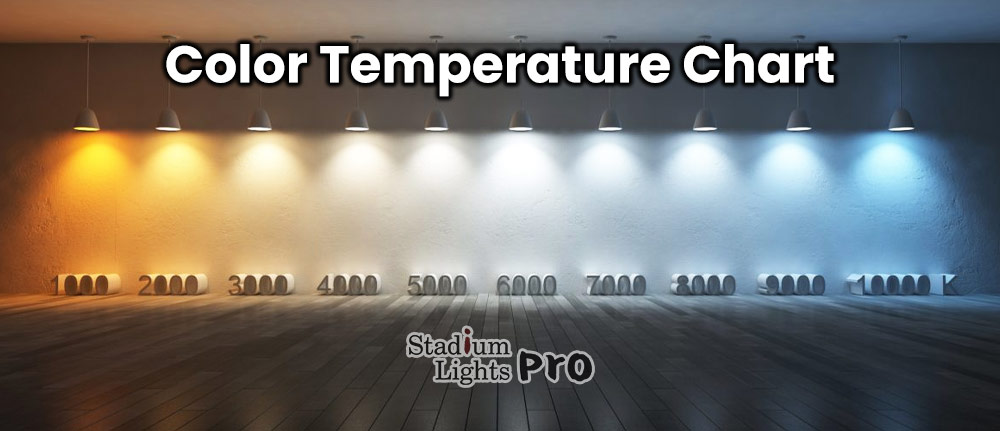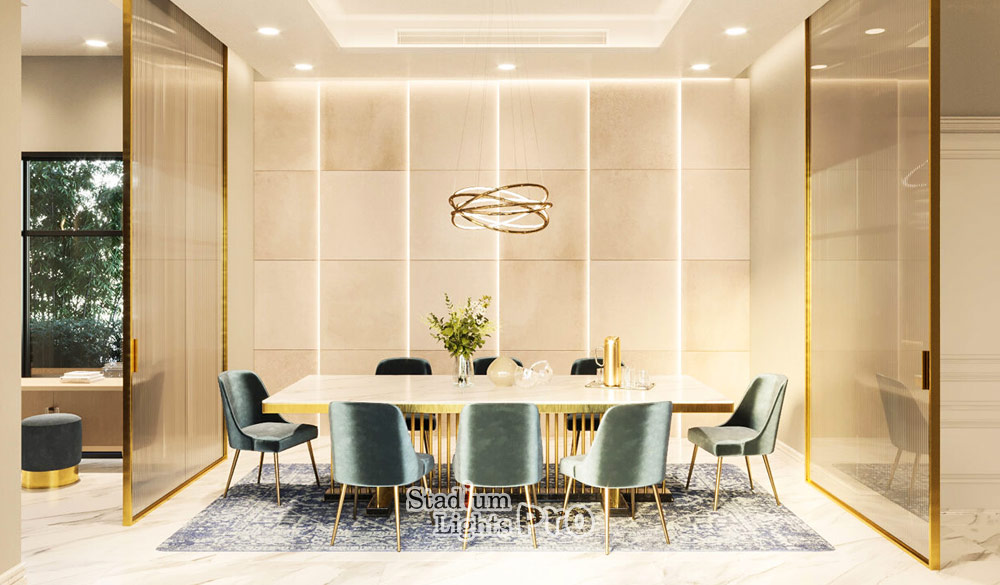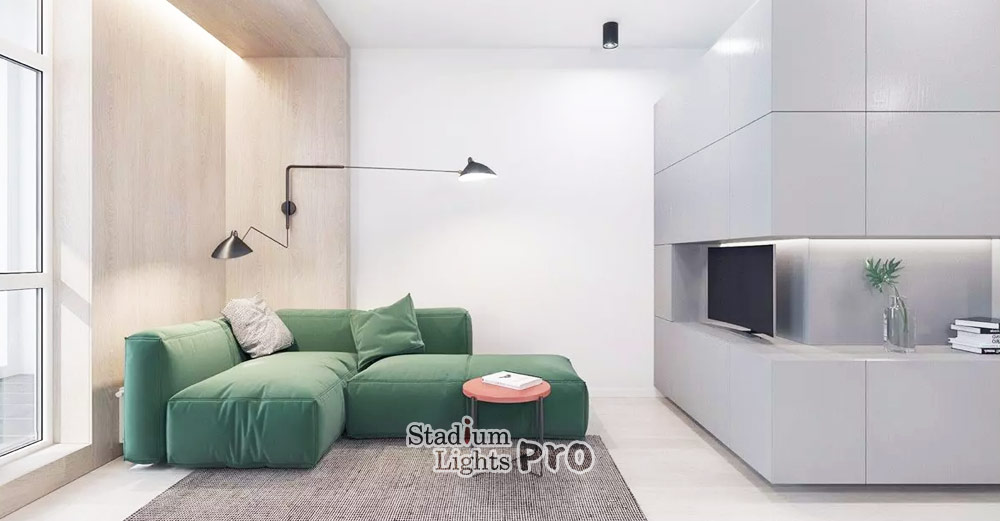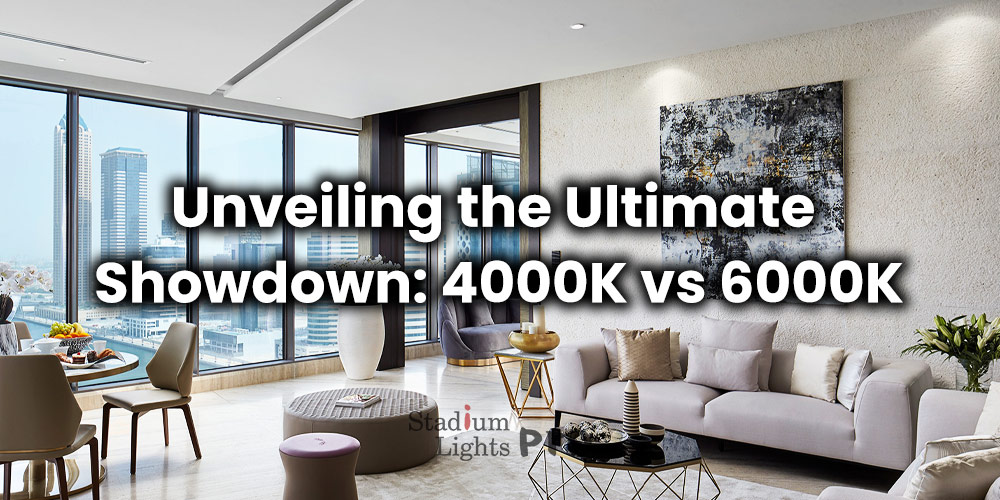
4000K and 6000K are color temperature measurements used to describe the color appearance of light emitted by a source, such as a light bulb or LED. They are measured in Kelvins (K) and indicate the warmth or coolness of the light. 4000K is considered a “neutral white” light, while 6000K is a “cool white” or “daylight” light.
Color temperature is essential because it can affect how we perceive colors, the visibility of an area, and the overall ambiance of a space.
The purpose of this article is to compare and contrast the characteristics of 4000K and 6000K lighting, and to determine which option is the superior choice for different types of applications and settings. By understanding the benefits and drawbacks of each option, readers will be able to make more informed decisions when selecting lighting for their homes, workplaces, or other environments.
Table of Contents
Toggle4000K lighting

What is 4000K?
4000K lighting is a type of light that falls within the “neutral white” color temperature range. It has a color temperature of 4000 Kelvins and is considered to be a cool white light. The light emitted by 4000K lighting appears to have a slight blue undertone, which makes it ideal for illuminating spaces where color accuracy and visibility are vital. This type of lighting is often used in commercial and industrial settings such as offices, schools, hospitals, and retail spaces as it provides a bright, natural-looking light that is easy on the eyes. It is energy efficient and known to improve productivity and concentration. Additionally, it creates less heat than other types of light sources which makes it an ideal lighting solution for various settings.
Advantages of using 4000K lighting
- Improved color accuracy and visibility – enhances the colors in a space, making it ideal for environments where color accuracy is needed, such as art galleries, museums, and retail spaces.
- Increased productivity and concentration – The cool, neutral white light emitted by 4000K lighting is easy on the eyes and can improve productivity and concentration in commercial and industrial settings such as offices and schools.
- Energy efficiency – 4000K lighting is energy efficient and can help to reduce energy costs over time.
- Less heat emission – 4000K lighting creates less heat than other types of light sources, making it a safer and more comfortable lighting solution for various settings.
- Good for health – The color temperature of 4000K has been found to be optimal for reducing eye strain and fatigue, and it is also known to help regulate the body’s circadian rhythm, making it an ideal lighting solution for both commercial and residential settings.
Where 4000K lighting is commonly used?
4000K lighting is commonly used in a variety of settings including:
- Commercial and industrial settings – such as offices, schools, hospitals, and retail spaces. The cool, neutral white light emitted by 4000K lighting is easy on the eyes and can improve productivity and concentration in these environments.
- Art galleries, museums, and other cultural institutions – The cool white light emitted by 4000K lighting enhances the colors in a space.
- Hospitals and Healthcare Facilities – 4000K lighting is used in healthcare facilities as it is known to reduce eye strain and fatigue, and it also helps regulate the body’s circadian rhythm.
6000K lighting

What is 6000K?
6000K lighting, also known as “cool white” or “daylight” lighting, emits a cool, bluish-white light with a color temperature of 6000 Kelvins. This light closely mimics natural daylight and is ideal for spaces where visibility and color accuracy are of the utmost importance. It is often used in outdoor settings such as streetlights, parking lots, and security lighting as it provides a bright, clear light that improves visibility and is easy on the eyes. Additionally, it’s commonly used in photography and videography as it provides a neutral light that accurately captures colors on film or digital cameras.
Advantages of using 6000K lighting
By understanding the many advantages associated with 6000K lighting, we can make an informed decision on the best color temperature for any given setting or venue.
- Improved visibility and color accuracy – The cool, bluish-white light emitted by 6000K lighting provides a bright, clear light that improves visibility and color accuracy, making it ideal for outdoor settings such as streetlights, parking lots, and security lighting. It’s also commonly used in photography and videography as it provides a neutral light that accurately captures colors on film or digital cameras.
- Good for outdoor settings – 6000K lighting is often used in outdoor settings, such as street lights and parking lots, because of its bright, cool light that provides good visibility, making it ideal for illuminating outdoor spaces at night.
What are the applications of 6000K lights?
If you’re unsure of where to use 6000K lighting, consider the following suggestions to determine if it’s the right fit for your needs and make changes accordingly.
- Outdoor settings – such as streetlights, parking lots, and security lighting. The cool, bright light emitted by 6000K lighting improves visibility and is easy on the eyes, making it ideal for illuminating outdoor spaces at night.
- Photography and videography – 6000K lighting provides a neutral light that accurately captures colors on film or digital cameras.
- Industrial settings – such as factories, warehouses, and other work environments that require bright, clear light for improved visibility and productivity.
- Commercial settings – such as supermarkets, shopping centers, and other retail spaces that require light for improved color accuracy.
- Residential settings – particularly in bathrooms, kitchens, and other spaces where clear light is needed for tasks such as grooming, cleaning, and cooking.
Which color temperature is more suitable for the sports field, 4000K or 6000K?

When it comes to sports fields, the color temperature that is considered better would depend on the specific sport and the time of day the field is used.
6000K lighting is considered to be a “cool white” or “daylight” light, which closely mimics natural daylight. The cool white light emitted by 6000K lighting is easy on the eyes and can help to reduce glare and eye strain for athletes, which is essential for sports that are played at night or in low-light conditions.
On the other hand, 4000K lighting is considered to be a “neutral white” light, which is more similar to the light of an overcast day. This type of lighting is also ideal for sports fields as it provides a natural-looking light that enhances the colors in a space. The cool, neutral white light emitted by 4000K lighting is easy on the eyes and can improve productivity and concentration, which is needed for sports that are played during the day.
Overall, both 4000K and 6000K lighting are suitable options for sports fields, and the best choice would depend on the specific sport and the time of day the field is used. A lighting design and consultation service with a professional can help to determine the best option for a specific sports field.
Comparison of 4000K vs 6000K lighting
When comparing color temperature, brightness, and energy efficiency between 4000K and 6000K lighting, there are a few key differences to consider:
Color temperature
4000K lighting has a color temperature of 4000 Kelvins and is considered a “neutral white” light, while 6000K lighting has a color temperature of 6000 Kelvins and is considered a “cool white” or “daylight” light. 6000K lighting has a bluish-white tone.
Brightness
Both 4000K and 6000K lighting provide a bright, clear light that can improve visibility in a space. However, 6000K lighting may be slightly brighter than 4000K lighting, making it ideal for outdoor settings or spaces where maximum brightness is required.
Energy efficiency
4000K and 6000K lighting are energy-efficient and can help to reduce energy costs over time. However, the specific energy efficiency of a light bulb or fixture will depend on the manufacturer and the type of bulb or fixture used.
When it comes to determining which option is better for specific applications and settings, it depends on the specific needs of the environment. For example, if color accuracy is the primary concern, then 4000K lighting would be the better choice as it provides a natural-looking light that enhances the colors in a space. On the other hand, if visibility is the primary concern, then 6000K lighting would be the better choice as it provides a bright, clear light that improves visibility and can be used in outdoor settings.
4000K vs 6000K frequently asked questions
Can 4000K and 6000K lighting be used together?
Yes, 4000K and 6000K lighting can be used together. For example, 4000K lighting can be used in indoor areas while 6000K lighting can be used in outdoor areas. A lighting design and consultation service with a professional can help to determine the best combination of lighting for a specific environment.
Can 4000K and 6000K lighting be used to regulate the circadian rhythm?
Yes, both 4000K and 6000K lighting can be used to regulate the circadian rhythm. The cool, neutral white light emitted by 4000K lighting is known to help regulate the body’s circadian rhythm, making it an ideal lighting solution for both commercial and residential settings. 6000K lighting also has this feature, although it is more commonly used in outdoor settings where visibility is of primary concern.
Are there any health concerns related to using 4000K or 6000K lighting?
Both 4000K and 6000K lighting are considered to be safe for use in most environments. Yet, we may consider the duration of use and the number of lights when evaluating the potential health effects of any type of lighting. It’s always recommended to consult with a professional if you have any concerns.
Is 4000K lighting good for eyes?
4000K is generally considered to be easier on the eyes than higher color temperatures like 6000K. This is because the yellow undertone of 4000K is similar to natural light, which is less harsh and easier to look at for extended periods of time.
Studies have shown that cool white light with a color temperature of around 4000K can reduce glare and improve visual comfort, making it a good choice for indoor lighting in spaces such as offices and homes. However, individual preferences and sensitivities to light can vary greatly and some people may find 4000K too harsh or yellowish.
Is 6000K too bright?
6000K is considered to be a high color temperature and can be considered “cool” or “daylight” white light. Because of this, it can be considered quite bright and may be too intense for certain spaces or situations. For example, in a bedroom or living room, 6000K light may be too bright and harsh, creating a glare and making it difficult to relax.
Whereas, in outdoor spaces or places that require a high level of visibility such as parking lots, garages, or streetlights, the brightness of 6000K is an advantage. We may consider the intended use of the space and the level of brightness that is appropriate for that specific application before deciding on a color temperature.
Is 6000K a full spectrum light?
6000K is not considered to be full spectrum light. The term “full spectrum” is often used to describe light that closely mimics the full range of colors and wavelengths found in natural sunlight. A light with a color temperature of 6000K would have a strong blue undertone and would not include the full range of colors that natural sunlight does. It would not have the same balance of red, orange, yellow, green, blue, indigo and violet that a full spectrum light has.
Full spectrum lights are often used for specific applications such as plant growth, aquarium, photography, visual arts and color matching. These lights emit a wide range of wavelengths, including ultraviolet and infrared, that mimic natural sunlight as closely as possible.
Color temperature and full spectrum are different things, color temperature describes how “warm” or “cool” the light appears to the human eye while full spectrum describes the range of wavelengths that a light source emits.
How many lumens are 4000K vs 6000K lights?
The lumen output of a 4000K or 6000K light is not directly determined by the color temperature. Lumens measure the amount of light produced by a source, while color temperature describes the appearance of that light. A light with a color temperature of 4000K can have a different lumen output than a light with a color temperature of 6000K.
Different manufacturers may use different lumen output for their 4000K or 6000K light. Therefore, it’s always recommended to check the lumen output for the specific product you are considering. In general, LED lights are often brighter and more energy-efficient than traditional incandescent bulbs, which means that an LED light with a color temperature of 4000K may produce the same or more light than an incandescent bulb with a color temperature of 6000K.
Additionally, the lumen output of a light will depend on the size and type of the light fixture, the quality of the bulb or lamp, and the size and layout of the space in which the light will be used.
Conclusion
Both 4000K and 6000K lighting have their own unique advantages and can be used in a wide range of environments. 4000K lighting is known for its improved color accuracy and visibility, increased productivity and concentration, and good for health while 6000K lighting is known for its improved visibility and color accuracy, good for outdoor settings and photography and videography.
When making a decision on which option is better, it’s recommended to evaluate the specific needs and requirements of the environment. Factors such as color accuracy, visibility, and energy efficiency should be considered. Moreover, we need to think about the purpose of the space, such as whether it’s primarily used for work, leisure, or a combination of both.
If you’re considering upgrading your lighting to either 4000K or 6000K, we invite you to take advantage of our free lighting design and consultation service. Our team of experts will work with you to understand your specific lighting needs, evaluate the environment and recommend the most suitable lighting solution to improve visibility, color accuracy, and energy efficiency.
Our goal is to help you create a comfortable and functional space that meets your needs and exceeds your expectations. Please don’t hesitate to contact us to schedule your free consultation today.

